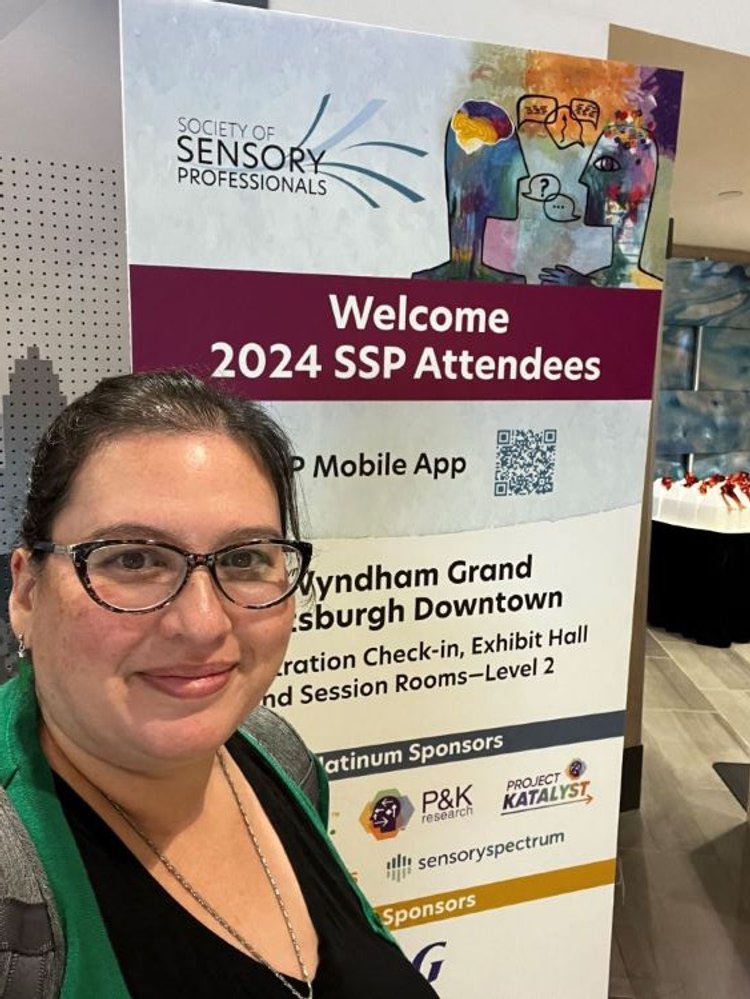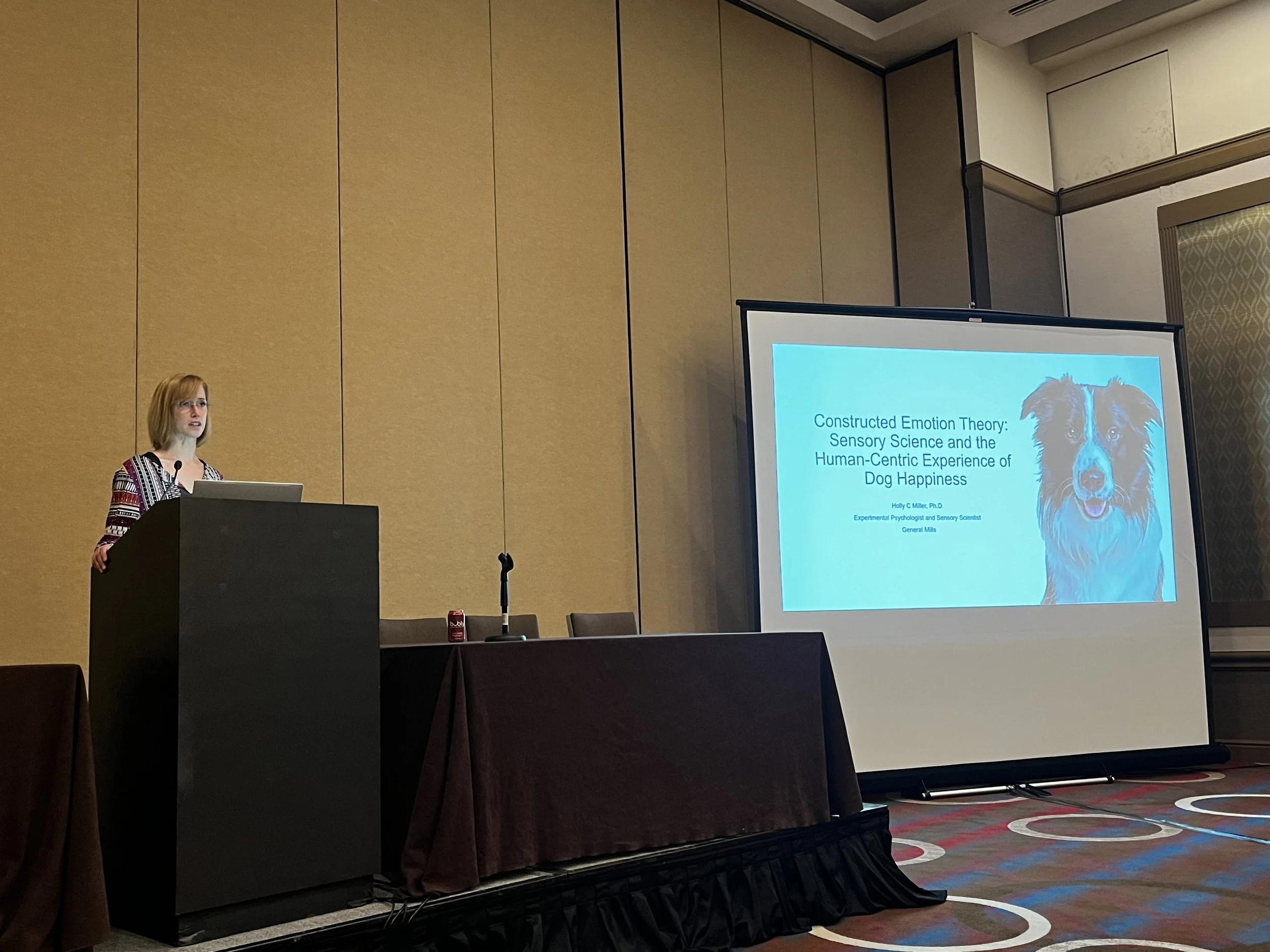Moving Beyond Liking: Why It’s Time to Rethink Emotion in Consumer Research
There’s been a hot topic brewing at recent conferences I’ve attended, from EuroSense 2024 in Dublin to SSP 2024 in Pittsburgh: the role of emotion in consumer research. And I have to say, it’s sparking some serious debates.
At EuroSense, the conversation kicked off with Thierry Worch’s Shakespearean-themed intro (yes, really) that challenged how much we rely on “liking” in consumer research. The gist? Measuring how much someone likes a product isn’t enough to predict if it will succeed in the market. Sure, it’s a data point, but it doesn’t capture the whole story of what drives consumers to buy or stick with a product. Worch argued for focusing more on the drivers behind liking—things like emotions, benefits, and wellbeing.
This isn’t exactly new territory for me. For years, I’ve pushed the idea that “liking” by itself isn’t enough to explain consumer decisions. It’s why I advocate for using behavioral tools and leveraging machine learning on historical data to optimize products and categories. What Worch and others at EuroSense emphasized is that we need to go beyond this surface-level metric and dive into the underlying factors that really motivate people.
Why “Liking” Isn’t Enough Anymore
Sara Spinelli built on this by talking about how personality impacts preferences, while Ciaran Forde drove home the point that sensory measures often have weak predictive power when it comes to consumer behavior. Forde’s message? If we’re going to rely on sensory and liking data, we might be missing the mark entirely. He, like me, sees value in behavioral coding measures that go beyond self-reported preferences.
David Thomson - MMR
David Thomson of MMR made it clear why so many products fail in the market: it’s not because people don’t like them, but because the products fail to motivate a real behavior change. He introduced concepts like reward theory and Russell’s Circumplex Model of Emotions, making the case that understanding the emotional triggers behind consumer actions is key to predicting success. But here’s where I have to pause and ask—are we actually making this stuff measurable in a meaningful way? As much as I’m on board with these ideas, I worry that businesses still need hard data to make decisions. The question remains: how do we move from these theoretical ideas to actionable insights?
The SSP Take: Behavioral Science and Emotion Measures
Michelle Niedziela - Nerdoscientist
The conversation got even more intense at the SSP conference in Pittsburgh. In the Behavioral Science session, which I had the privilege of moderating, we tackled how frameworks from psychology and neuroscience can help us move beyond traditional measures of liking. We need to get better at designing studies that give businesses something they can actually use. In-home studies using sensors, like the ones Janavi Kumar and Megan Schumaker from General Mills discussed, are a step in the right direction—capturing real behavior, not just what people say they do in surveys.
Alex Kuzmina from MMR also brought some innovative thinking with her work combining Conversational AI and Future Thinking Priming (FTP). FTP encourages participants to imagine their future selves, giving richer, more forward-thinking insights. This kind of approach helps us go beyond what consumers like in the moment and look at how products might fit into their lives long-term. Again, it’s all about behavior, not just preference.
The Elephant in the Room: Can We Really Measure Emotions?
Holly Miller - General Mills
Now, let’s talk about the elephant in the room: measuring emotions. Holly Miller from General Mills threw down the gauntlet in the Emotion session with a provocative question—can we actually measure emotion, or are we just projecting our own biases onto what we think we’re seeing? Her talk explored this through the lens of constructed emotion theory, specifically looking at how we interpret emotions in dogs. Her point was that we might be overcomplicating things by trying to measure emotions that may not even exist as we understand them.
Here’s where I get even more skeptical. While I love the idea of tapping into consumer emotions to better understand their behavior, we need to be really careful about the methods we use. I’ve never been a fan of facial coding—it feels like we’re trying to put a scientific veneer on something that’s deeply subjective and context-dependent. Implicit association measures seem like a better bet, because they’re not claiming to measure emotion directly. Instead, they capture the connections consumers make about their experiences, which might be the best window we have into the emotional side of things. But even then, let’s be real—it’s not perfect, and we need to acknowledge that.
What’s Next?
The takeaway from all these discussions, for me, is that the field is moving in the right direction by questioning our reliance on “liking” as a catch-all measure. We’re starting to bring more behavioral science into the mix, and that’s a good thing. But at the same time, we need to be cautious about over-promising on what we can actually measure when it comes to emotions. Sure, emotions are important, but they’re tricky to pin down in a reliable, actionable way.
The excitement around these topics at both EuroSense and SSP shows that the field is evolving. We’re thinking more openly about what drives consumer behavior and how we can improve our research methods. I’m looking forward to seeing how these conversations continue at next year’s conferences, especially Pangborn. But for now, one thing is clear: if we want to make our research more meaningful for businesses, we have to go beyond liking—and maybe even rethink what we mean when we talk about emotion.





